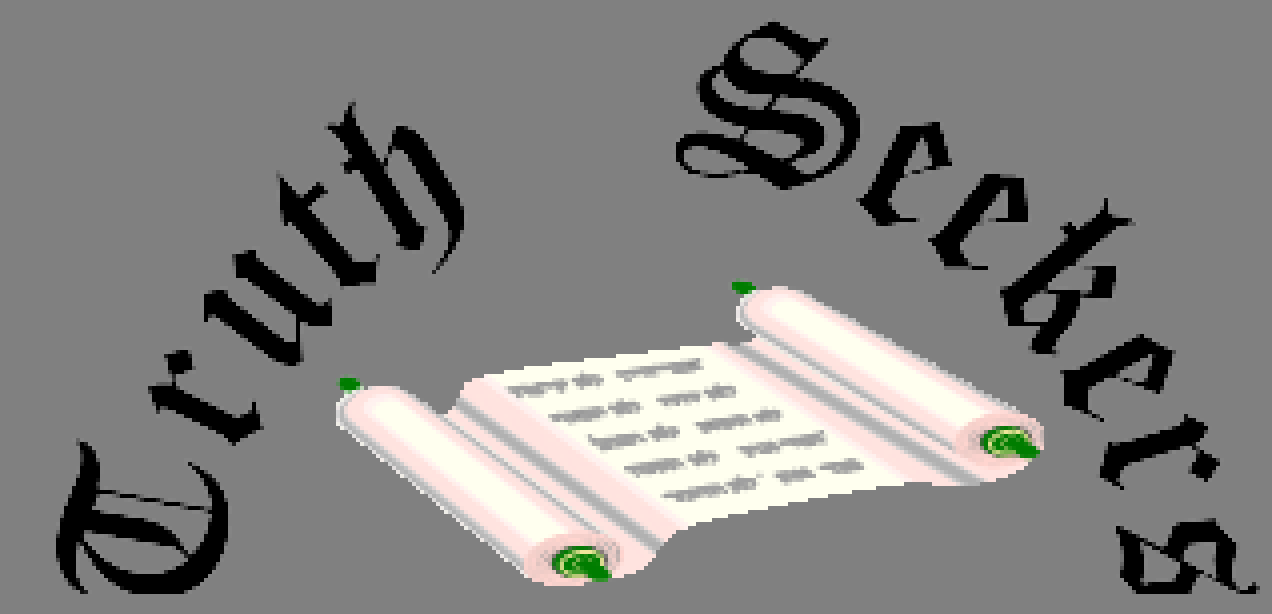 |
|||||||||||||||||
|

Newsletter #8: Bul 2011 (Eighth Month of the Scriptural Year)
Pagan Associations: Have You Gone Back Far Enough? by Larry & June Acheson
When it comes to beginning a new month, June and I would normally advocate going by the crescent new moon as seen from wherever we live, just as we do with each new Scriptural day. In fact, if we suddenly found ourselves devoid of the technology that allows us to know when the new moon has been sighted over Israel, that is what we would do. However, since we can know whether or not "day 1" of a new Scriptural month has begun in Israel, we personally choose to coordinate our days accordingly. Just as the seventh day of the week that we observe encompasses the same day that is observed in Israel, we don't begin "day 1" of a new Scriptural month unless it is also that same day in Israel, even though that day began eight hours earlier for them. Our friend Chuck Henry, in his excellent study The Scriptural Month, offers additional insight into why we prefer this method, and we recommend checking out his study for additional insight into the Almighty's calendar. Have You Gone Back Far Enough? June and I have also recently heard from a believer who is being pressured to do no "regular work" on the day of the new moon. We actually cover this teaching in chapter 15 of our study Something Different: Lunar Sabbaths, "Is There a “No Trade” Restriction on the Day of the New Moon?" In this chapter, we address the fact that, regardless of whether or not you are willing to accept the Septuagint's translation of Amos 8:5, the truth of the matter is, that is how those 1st century BCE Hebrew scholars who translated the Septuagint understood the application of the Hebrew word "chodesh" in that verse. Had they regarded the day of the new moon as a day on which business transactions are not allowed, they certainly would have translated "chodesh" into Greek as noumenia (new moon) instead of the more general mane (the Greek word for "month"). Moreover, if indeed there was a general understanding within the ranks of Judaism that "New Moon Day" was a rest day, there would have been a flurry of (recorded) protests over the way Amos 8:5 was translated in the Septuagint translation. Indeed, the absence of any controversy within Judaism over whether or not we should rest on the day of the new moon offers sufficient evidence that regular work was (and is) sanctioned on that day. Occasionally, June and I are questioned about our conviction that the crescent moon is the original Scriptural "marker" for beginning a new month, and this is a question that the above believer posed in his e-mail inquiry. He has obviously been exposed to the teaching that using the crescent new moon to determine the beginning of a new Scriptural month constitutes imitating a heathen custom. One web site, playing on the shock value of pagan association, offers this clever challenge, complete with visual aids:
Would Yahweh use
this pagan symbol to mark the beginning of a month in His calendar? With all the pagan crescent moons displayed above,[1] including at least three outhouses, it should be pretty obvious that we should steer clear of anything and everything associated with crescent moons, right? There is a name for the above approach: Guilt by association. We caution against assuming that "guilt by association" means "truly guilty." In our study "When and Where Does the Scriptural Month Begin?" we cover our primary reasons for concluding that Scriptural evidence, combined with historical understanding, supports believing that the new Scriptural month begins with the sighting of the crescent new moon. However, some groups, such as the group above who attempts to use their web site to demonize this method, criticize it because ancient pagans worshipped the new moon and even carved images of crescent new moons. This "revelation" is presented by "conjunction proponents" so as to shock new Torah-observant initiates into rejecting crescent sighting as the means for determining a new Scriptural month. We will say that, to a large extent, this approach has been successful. Please don't get us wrong — we certainly want no part of any observance or celebration whose origin is ultimately traced to pagan worship. This means that June and I do not join in the observance of such common festivals as Halloween, Valentine's Day, Easter and Christmas. However, unlike the custom of watching for the new moon crescent for the purpose of starting a new month, all trustworthy, scholarly references that we are aware of agree that Halloween, Valentine's Day, Easter and Christmas are observances that are ultimately traced to heathen worship. In fact, in many instances, references whose authors embrace observing these holidays openly admit to their heathen origin and often point to the "Christianized" holiday as Christianity's "triumph" over paganism. We need to be mindful of the fact that Torah enjoins us to not worship Yahweh in imitation of how pagans worshipped their idols (Deuteronomy 12:29-32). Why borrow customs from heathens when the Almighty has already told us how He wants us to worship Him? Once we move beyond the elementary stages of Bible study, we should be able to determine that an association with paganism doesn't necessarily mean that this is where the custom originated. Thus, the fact that pagans worshipped the moon does not automatically discredit using the crescent new moon to determine the beginnings of months. For example, pagans also worshipped a moon deity named "Yah."[2] Does this mean we are imitating a pagan custom when we refer to the Almighty as "Yah" or "Yahweh"? We hope you see our point: Unregenerate mankind will invariably take something honorable and stain it with corruption. We can either reject that which was once honorable or we can remove the stain and restore the original honor. June and I choose this latter option. The believer mentioned above, in his e-mail inquiry, asked us if we believe observing the new moon based on the crescent sighting method is traced to pagan worship. I answered that it is, but at the same time, I asked him to consider the following potential scenario: |
|
|||||||||||||||
|
This is the name of our Creator, Yahweh, sometimes called the Tetragrammaton. It is given here in (A) the Phoenician script, (B) the Ivrit Kadum (Paleo-Hebrew) script, and (C) the Modern Hebrew script (a stylization of Aramaic).
Note: All books/articles in PDF format require Adobe Acrobat Reader to view them. To obtain your free copy of Adobe Acrobat Reader, just click on the icon below.
|
|||||||||||||||||
|
Thank You for visiting our website. May Yahweh Bless you as you continue your search for truth. |
|||||||||||||||||













